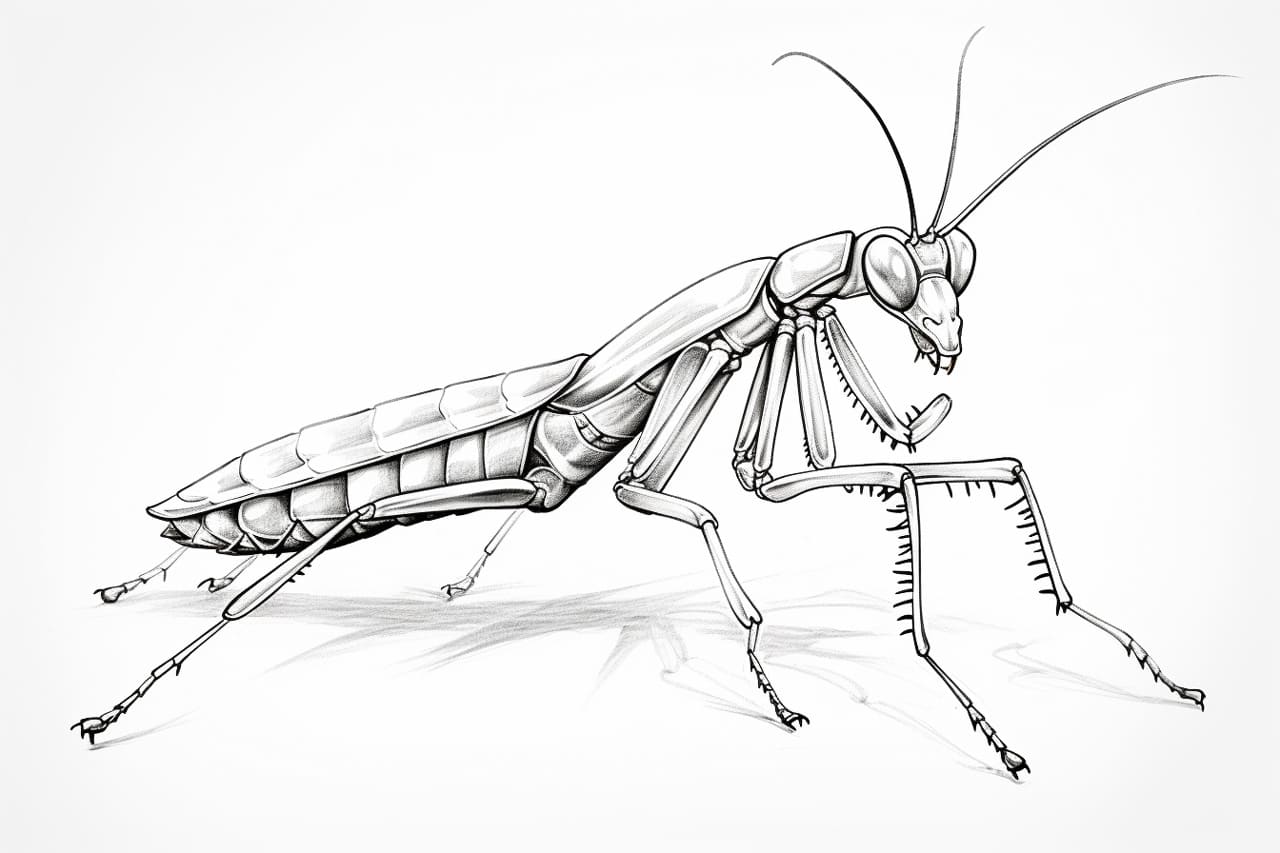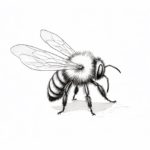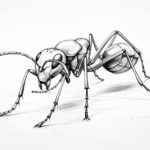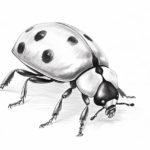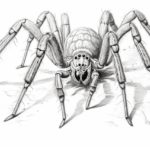Welcome to this step-by-step guide on how to draw a praying mantis. Whether you’re an experienced artist or just starting out, this tutorial will help you create a realistic and detailed representation of this fascinating insect. By following these clear and concise instructions, you’ll be able to capture the unique characteristics of the praying mantis with ease. So, grab your drawing materials and let’s get started!
Materials Required
Before we begin, gather the following materials:
- Drawing paper or sketchbook
- Pencil (preferably HB or 2B)
- Eraser
- Fine-tipped black pen or marker (optional)
- Colored pencils or markers (optional)
Now that you have everything you need, let’s dive into the step-by-step process of drawing a praying mantis.
Step 1: Basic Guidelines
Start by lightly sketching the basic guidelines to establish the pose and proportions of the praying mantis. Begin with a vertical line in the center of your paper, which will act as the body’s main axis. Then, add a horizontal line slightly above the center to indicate the placement of the mantis’s eyes. Finally, lightly sketch two oval shapes on each side of the horizontal line to represent the head and thorax.
Step 2: Head and Eyes
Add more detail to the head by shaping it with smooth curves, using the oval shape as a guide. The mantis has a triangular-shaped head, wider at the bottom and tapering towards the top. Next, draw two slightly diagonal lines from the top of the head to create the mantis’s large compound eyes. Make sure the eyes are proportional to the head size and mirror each other.
Step 3: Antennae and Mouthparts
Draw two long, thin antennae extending from the top of the mantis’s head. These antennae are typically longer than the length of the mantis’s body. Then, add the mouthparts below the eyes, consisting of two short mandibles on each side and a longer labium in the center.
Step 4: Thorax and Legs
Now, let’s focus on the thorax and legs of the praying mantis. Extend two curved lines from the bottom of the head to create the thorax. The thorax should be wider than the head and gradually taper towards the abdomen. Once the thorax is complete, sketch the first pair of forelegs on each side of the thorax. Praying mantises have strong, spiky forelegs used to catch prey. Ensure these legs are longer and thicker than the other legs.
Step 5: Abdomen and Wings
Next, draw the abdomen by extending a slightly curved line from the thorax. The abdomen should be longer than the head and thorax combined. At the end of the abdomen, add the wings. Praying mantises have two pairs of wings, with the front pair being larger and longer than the hind pair.
Step 6: Leg Details
Now it’s time to add more detail to the mantis’s legs. Draw additional segments on each leg, making sure they gradually decrease in size towards the end. The mantis has sharp claws at the end of each leg, so include these small details at the appropriate places.
Step 7: Body Texture and Patterns
To give your drawing more depth and realism, add texture and patterns to the mantis’s body. Praying mantises have a distinctive texture with grooves and patterns on their exoskeleton. Use short, curved lines to create these textures, making sure they follow the body’s contours.
Step 8: Finalize the Outline
Now that you have all the main features in place, go over your sketch and refine the outline. Erase any unnecessary guidelines and make any necessary adjustments to ensure the proportions and shape are accurate. Once you’re satisfied with the outline, you can go ahead and darken it using a pen or marker. Alternatively, you can proceed directly to adding color using colored pencils or markers.
Conclusion
Congratulations! You have successfully learned how to draw a praying mantis. By following these step-by-step instructions and using your creativity, you can create a realistic and detailed representation of this intriguing insect. Remember to practice and experiment with different poses and angles to further enhance your drawing skills. So, grab your art supplies and start capturing the beauty of the praying mantis on paper today!
Fun Facts About Praying Mantis
- Predatory Skills: Praying mantises are highly skilled hunters. Their front legs are equipped with spines and adapted to grasp and hold prey securely. They are known for their characteristic “praying” pose, where they hold their front legs together, ready to strike at passing insects.
- Camouflage: Many species of praying mantises exhibit excellent camouflage, blending in with their surroundings to avoid detection by both prey and predators. Some species resemble leaves or twigs, while others mimic flowers or even other insects.
- Mimicry: Some species of mantises have evolved to mimic other insects, such as ants or bees, to deter predators or to get closer to their prey without being detected.
- Head Movement: Praying mantises are known for their ability to turn their heads nearly 180 degrees to scan their surroundings. This allows them to locate potential prey or threats more effectively.
- Mating Behavior: Praying mantis mating behavior is often quite dramatic. In some species, females may cannibalize the male after mating, although this behavior is not as common as often believed. Males may also engage in elaborate courtship displays to attract females.
- Egg Cases: Female praying mantises lay their eggs in protective cases called oothecae. These cases are often attached to twigs or other surfaces and contain numerous eggs. The young mantises, called nymphs, hatch from the ootheca and resemble miniature versions of the adults.
- Vision: Praying mantises have large, compound eyes that provide them with excellent vision. They are particularly adept at detecting movement, which helps them locate prey and avoid predators.
- Diet: Praying mantises are carnivorous and primarily feed on other insects, including flies, crickets, and moths. They are considered beneficial predators in gardens and agricultural settings, helping to control pest populations.
- Lifecycle: Praying mantises undergo incomplete metamorphosis, meaning they hatch from eggs as nymphs and gradually molt and grow into adults. Molting allows them to shed their exoskeletons and grow larger.
- Global Distribution: Praying mantises can be found on every continent except Antarctica. They inhabit a wide range of habitats, including forests, grasslands, and gardens, where they play important roles as predators in local ecosystems.

